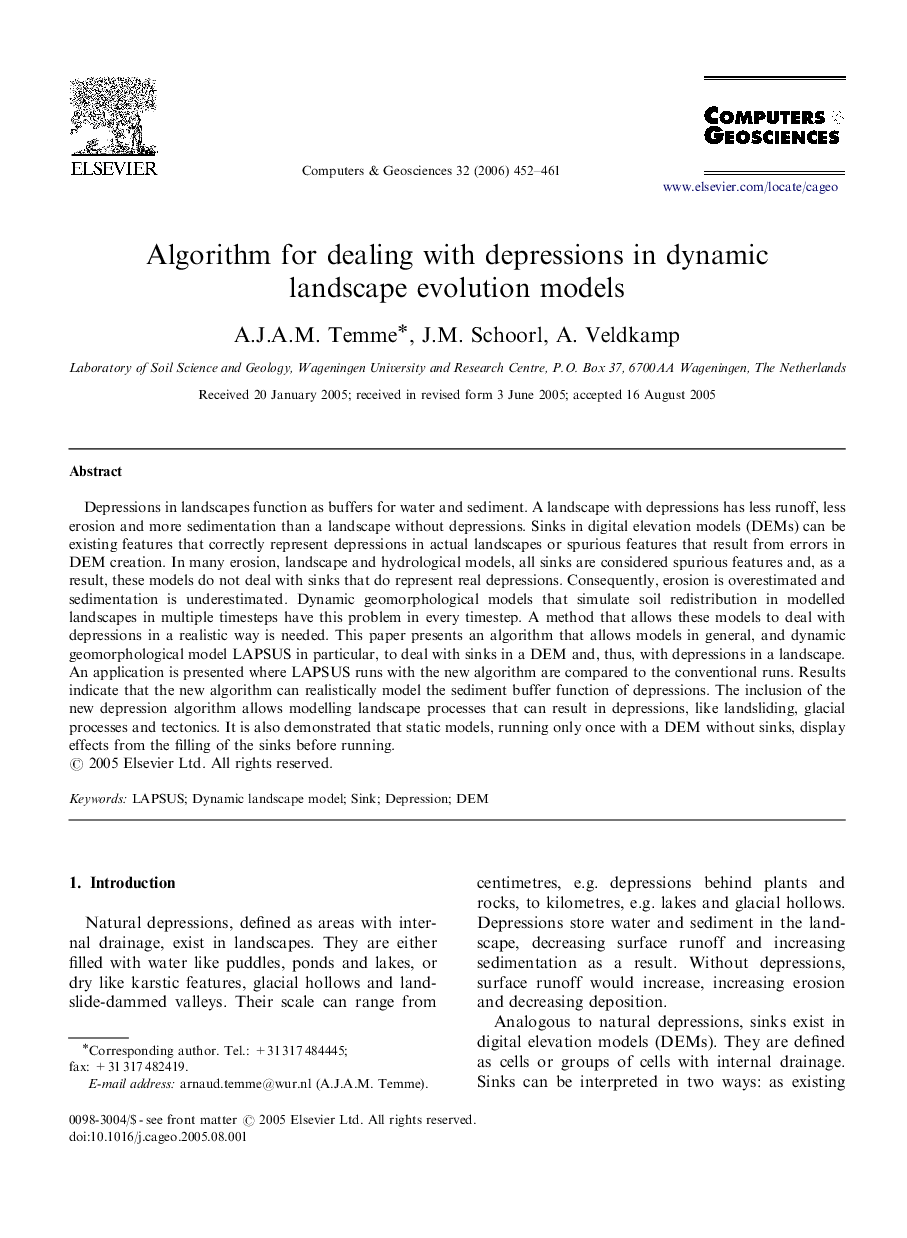| کد مقاله | کد نشریه | سال انتشار | مقاله انگلیسی | نسخه تمام متن |
|---|---|---|---|---|
| 508545 | 865223 | 2006 | 10 صفحه PDF | دانلود رایگان |

Depressions in landscapes function as buffers for water and sediment. A landscape with depressions has less runoff, less erosion and more sedimentation than a landscape without depressions. Sinks in digital elevation models (DEMs) can be existing features that correctly represent depressions in actual landscapes or spurious features that result from errors in DEM creation. In many erosion, landscape and hydrological models, all sinks are considered spurious features and, as a result, these models do not deal with sinks that do represent real depressions. Consequently, erosion is overestimated and sedimentation is underestimated. Dynamic geomorphological models that simulate soil redistribution in modelled landscapes in multiple timesteps have this problem in every timestep. A method that allows these models to deal with depressions in a realistic way is needed. This paper presents an algorithm that allows models in general, and dynamic geomorphological model LAPSUS in particular, to deal with sinks in a DEM and, thus, with depressions in a landscape. An application is presented where LAPSUS runs with the new algorithm are compared to the conventional runs. Results indicate that the new algorithm can realistically model the sediment buffer function of depressions. The inclusion of the new depression algorithm allows modelling landscape processes that can result in depressions, like landsliding, glacial processes and tectonics. It is also demonstrated that static models, running only once with a DEM without sinks, display effects from the filling of the sinks before running.
Journal: Computers & Geosciences - Volume 32, Issue 4, May 2006, Pages 452–461